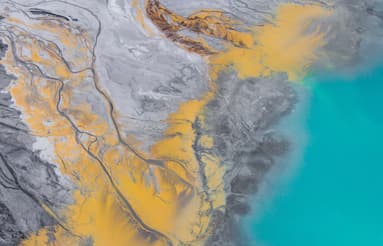Types of Earth Fissures
A ground fissure, also known as an Earth fissure, is a thin linear breach in the surface of the Earth. An earthquake, volcano, subsidence, or mass wasting are all possible causes.



Also called a crevasse and found in an ice sheet, glacier, or earth.

Also called desiccation cracks or cracked mud and found in arid climates.

Sometimes called a volcanic fissure, eruption fissure, or simply a fissure.

Also referred to as a ground rupture or ground displacement.

A crevasse is a deep fracture, crevice, or fissure in ice, glaciers, or the ground. Crevasses occur as a result of the movement and tension caused by tensile force created when two semi-rigid pieces above a plastic substrate move at different speeds. Breakage occurs along the faces as a result of the shear stress's severity.
Vertical or near-vertical walls are common in crevasses, which can melt and produce seracs, arches, and other ice structures. The size of a crevasse is frequently determined by the quantity of liquid water present in the glacier. A crevasse can be up to 45 meters deep and 20 meters broad.

When moist, muddy silt dries out and compresses, naturally occurring mudcracks begin to form. Because the top layer shrinks while the bottom layer remains the same size, a strain develops.
Channel fractures occur in the dried-up surface when the tension gets too great. Individual fractures grow and link together to form a polygonal, interconnected network.
Mudcracks grow naturally in dirt that has been soaked with water. Mudcracks are formed by abandoned river channels, floodplain muds, and dry ponds. Mudcracks can also indicate whether the development occurred in a mostly sunny or shady region.

A fissure vent, sometimes called a volcanic fissure, eruption fissure, or simply a fissure, is a linear volcanic vent through which lava erupts without explosive activity. The vent is usually a few meters broad and several kilometers long.
From a volcano, a fissure allows lava to emerge filled with mineral-bearing substances. The height of fissure eruptive material is small compared to the volcanic eruption, often only a few tens of meters.

Surface rupture can be defined as a noticeable displacement of the earth's surface when an earthquake ruptures. Surface rupture refers to ground movement which might be vertical or horizontal. A buried rupture is when there is no displacement at ground level.
Large expanses of land can be affected by surface rupture. It's also worth noting that not every earthquake causes surface rupture, especially those that are smaller and deeper.